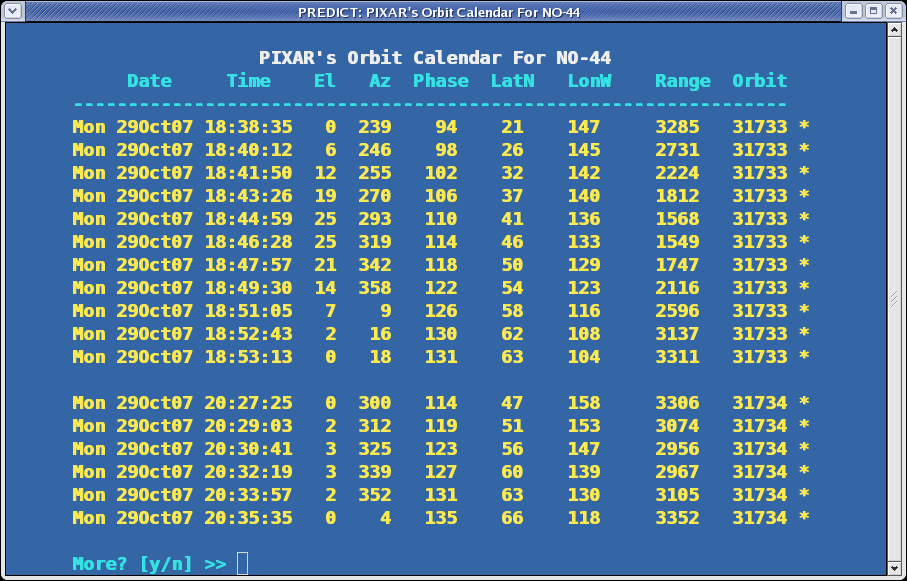Well, I’m not much for operating really, but I have been trying to work up the courage actually talk on the AO-51 amateur satellite. It was down from October 18th, but today was back up and running the repeater. I am still using a handheld Arrow crossed Yagi, so my hands are pretty busy, but I’m slowly calming down enough to keep the satellite in the pattern of the antenna, and tonight, I decided to try my luck on the westward pass of AO-51. The westward passes are a little calmer than the eastern passes.
Of course, all was not perfect. For some reason, I was picking up a huge amount of interference from the little VN-120 recorder that I used so successfully last time. Nevertheless, I set it up, and aimed the antenna to the south where I expected the satellite to show up. Soon, there was some traffic, and I heard NH7WN, who is in Honolulu. I haven’t double checked this, but I am pretty sure that Honolulu is just at the limits of what we can hit from the San Francisco Bay area. (A quick calculation shows that the distance is about 2400 miles). Pretty damned good.
Here is the MP3 early in the pass: NH7WN via AO-51
I then was getting some horrible screeching interference from the little recorder. Not sure what was going on there, but I didn’t like it, so I switched the recorder off. Sadly, that means I have no record of my first QSO via AO-51. I’ll get that worked out soon. My adrenaline was pumping, and I called out a callsign. For the life of me, I don’t remember which one it was. K7WJS? Not sure. How pathetic is that? I’m afflicted by an inability to remember people’s names unless I write them down, and when your hands are full of an HT and an antenna, it’s impossible to write them down. The second call was K6YK, John in Stockton, which is much closer than Honolulu, but still fun.
Just after that, I started to lose the satellite. There are hills to the north behind me, and the tree cover isn’t ideal either, so I called it a night. I’m gonna have to work on getting a better setup for this. The things I think would help are:
- a tripod for the antenna and HT ala K7AGE
- a light, for these outdoor passes
- a clock that reads in both local time and UTC
- a recording solution that doesn’t put hash on the line
- less caffeine, to calm me down during the pass.
Anyway, I’m gonna send off some emails and call it a night.
[tags]Amateur Radio, AO-51, Satellite[/tags]



